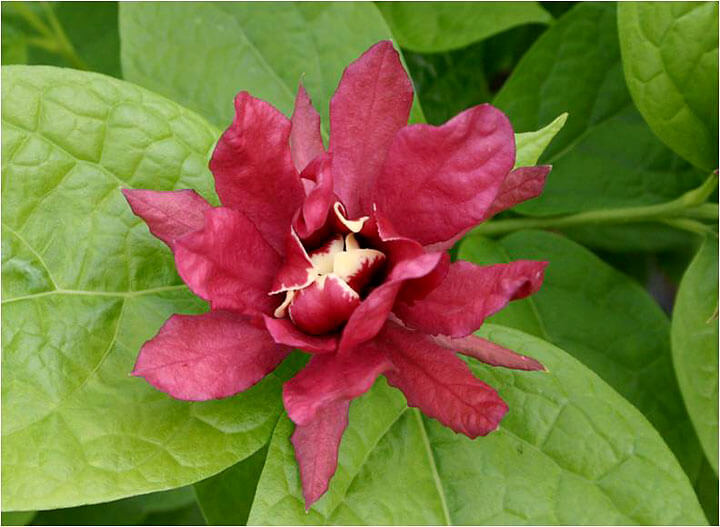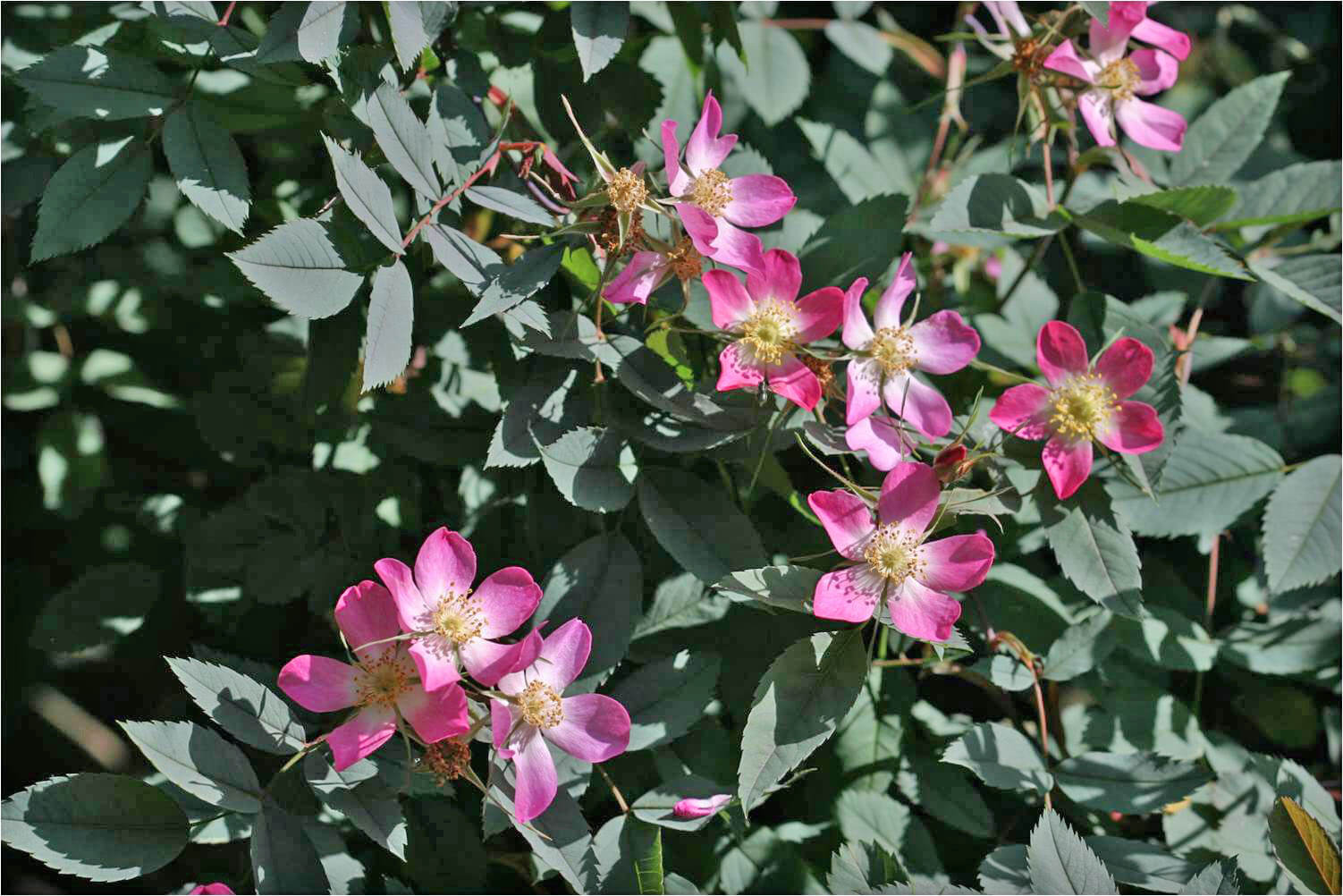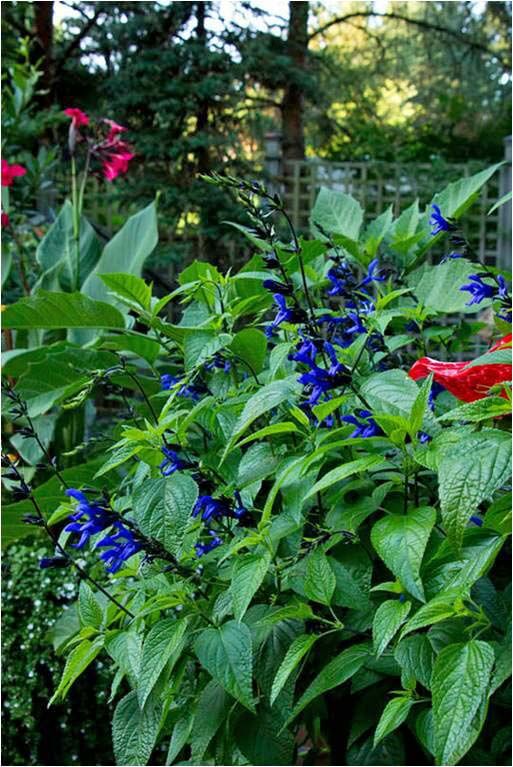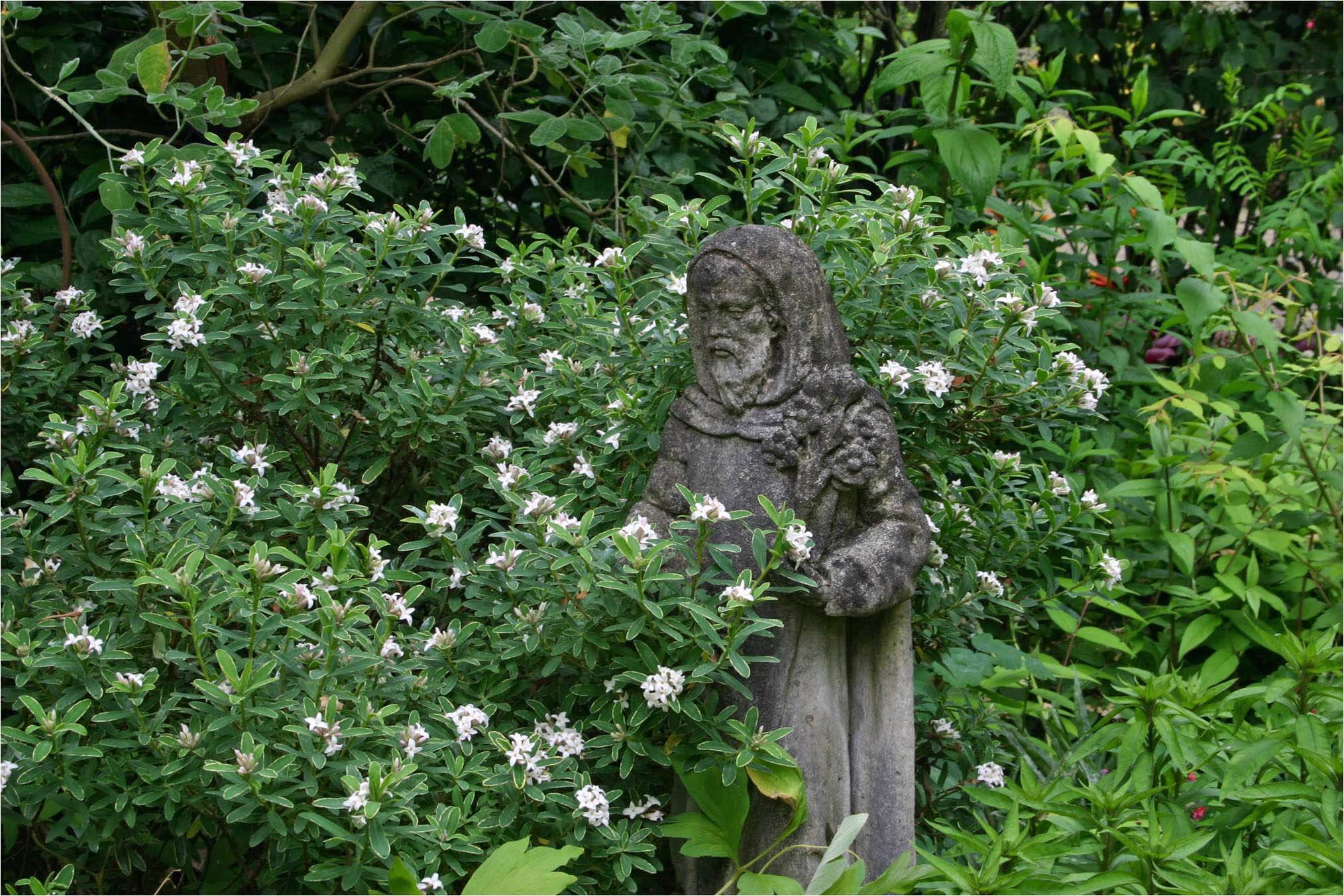
Unseasonably warm weather continues here in the Pacific Northwest, and the plants are responding to it. In many cases they need supplemental watering earlier than what would be the norm. And while my lawn has remained green with no extra water, many plants are showing signs of stress with the heat. This is especially true for those grown in containers and newly planted color spots. I am very glad that I used Black Gold Natural & Organic Potting Mix in all my pots this spring because it has done an excellent job of holding moisture for my summer flowers.
The garden continues to be alive with color. I always plant some summer annuals or summer-blooming perennials, but I am also trying to incorporate more woody shrubs into my landscape. There are many advantages to doing this, two being that shrubs tend to live longer and lend greater substance to garden spaces.

A shrub that always attracts the attention of visitors to our garden is the sweetshrub, Calycanthus ‘Hartlage Wine.’ This hardy deciduous flowering shrub will reach about 10 ft in height but can be kept shorter with seasonal pruning. The deep rich brown flowers are what make it look so unique. I also have the white-flowered C. chinensis (Chinese sweetshrub), with its blooms that look somewhat like those of a camellia. Both of my plants get shade for part of the day and thrive in the warm weather. My experience has been that they seem to like moist soil, so I mulch them with Black Gold Garden Compost Blend every spring.
Daphne sometimes gets a bad rap for being temperamental, but the cultivar ‘Summer Ice’ is an excellent hardy shrub that flowers through most of the summer. While the blooms are not as fragrant as some other varieties, the long blooming period compensates for this. The variegated leaves also provide interest with their thin white edges.
While roses are known for their fragrance and cutting, there are some that are neither fragrant nor good as cut flowers. One of these is Rosa glauca (red-leaved rose), which is primarily grown for its gray-green and coppery foliage. While it does have small pink flowers, it is the foliage that makes this rose a beautiful landscape shrub. It is large, reaching 8-10 ft tall, and a wonderful background plant

for a flower bed. Do not think that just because this is a ‘rose’ that it will be high maintenance; my plants have never been sprayed and exhibit no signs of any disease. Rosa glauca also has beautiful red hips in the fall.
While not winter hardy, my deck would not be complete without a Heliotropium arborescens (garden heliotrope) trained as a small tree. Heliotrope loves the heat and blooms all summer with purple clusters of flowers that have a slight cherry-vanilla fragrance. Cut off the old flowers and you will be rewarded with continuous blooms. My heliotrope was planted in Black Gold Natural & Organic Potting Mix with a little quality fertilizer worked into the potting soil.
For many years, salvias have been part of my summer garden scene, both in pots and the ground. Salvia ‘Black and Blue’ will usually overwinter in the ground but not often in pots. Thankfully, several in-ground plants reappeared from last year. I also bought and planted three gallon-sized plants in April that are now in full bloom. The effortless salvias will continue blooming all summer and well into the fall. Cut off the old flower stems and new ones will soon appear. Their brilliant royal blue flowers are also hummingbird magnets, and the plants are superb for deck or patio.
Last year I planted Salvia ‘Wendy’s Wish’, which was new to me at the time. The large, tubular, fuchsia-colored flowers are shaped much like those of ‘Black and Blue’, and the plants have a similar growth habit. Even with a just a few flowers, my colorful and resilient ‘Wendy’s Wish’ has also proved to be a hummingbird magnet. Thankfully, the heat will not be a problem for ‘Wendy’s Wish’ or ‘Black and Blue’, both are tolerant of high heat and even some drought.
In my November article about winterizing, I mentioned that I had wrapped three of the stems of my hardy banana, Musa basjoo. In early April, I took the wrappings off and within just a few days there were new leaves emerging from each stem. Those leaves began at the top of the stem, and, as I write this article in mid-June, the stems now have leaves towering at over 12 feet! Plus there are many new ‘pups’ coming up from around the base. This tropical always thrives in warm weather, so I can expect it to do magnificently.
As the summer season progresses be sure to water accordingly during hot spells, and take time to enjoy your garden. It is there for enjoyment and relaxation as well as beauty and food.


